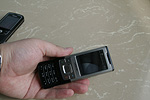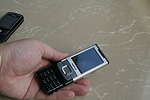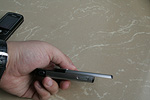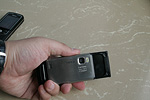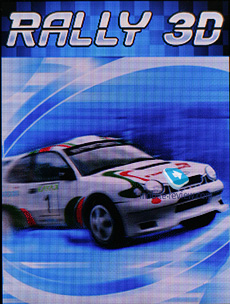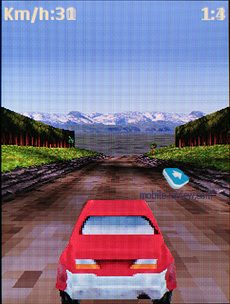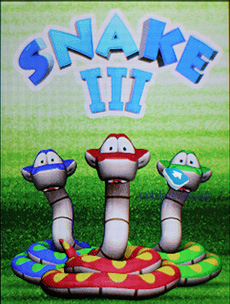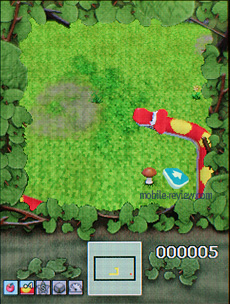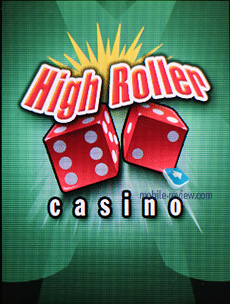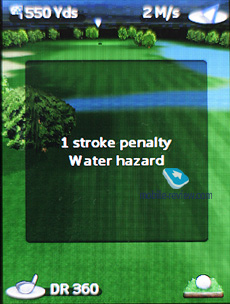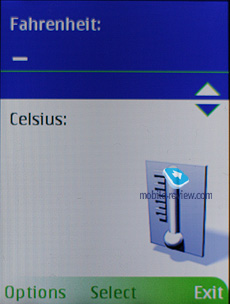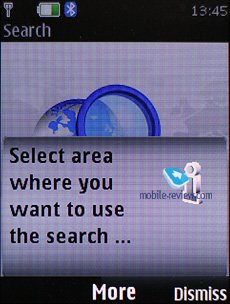|
|
Review of GSM/UMTS-handset Nokia 6500 slide
Live photos of Nokia 6500 slide
Table of contents:
- Design and materials
- Keypad
- Display
- Memory
- Battery
- USB, Bluetooth
- Performance
- Camera
- TV-Out
- Themes, applications, games
- Competition
- Impressions
Sales package:
- Handset
- Battery (BP-5M, 900mAh Li-Ion)
- Wired stereo-headset (HS-47)
- MicroSD memory card (256Mb, for select markets only)
- User Guide
- MicroUSB data cable CA-101
- Nokia TV-Out Cable CA-92U
- Charger (AC-4)
- Software CD
At the very end of May, Nokia unleashed two new handsets, ushering in the new 6500-series. However the 6500 Classic and the 6500 Slide are brothers in arms only from the technical point of view – while sharing the index, in reality and in Nokia’s strategy in particular, these are two are totally different products philosophy-wise.
Even though they are set apart by a ton of different aspects, the foremost thing is positioning. For the vendor, the 6500 Classic is a so called “iconic-product”, being one of 2007’s key models. They have great expectations for this phone and even now it is absolutely clear that the Classic is up for the title of one of this year’s best selling models. One of the prerequisites for that will be the magnitude of Nokia brand, since it is the second device in the Finnish manufacturer’s refined portfolio to feature a wafer-thin profile, which is the eye-grabbing factor. The fact that this offering is targeting a broad audience is indicated by its conventional design with no components that could put some conservative prospects off, metal accents and different color schemes.
Perhaps, it would be okay to say that the Nokia 6500 Classic comes to replace the 6300, but that would not entirely correct. The fact of the matter is that the 6300 was and still is just an addition to the company’s current line-up with no revolutionary ideas in it and moreover falling flat on features for a Series 40 flagship. Basically, calling the 6300 a flagship wouldn’t be the right thing either, as many take the 6300 as an iteration of the real flagship, the 6233, and this opinion has been built up only due to the lack of other offerings in this segment.
The effort the company put into the 6300 promotion deserves a credit – a mid-range product is presented as a fashion solution, stylish and beautiful. It’s a pretty tough decision to disagree that the Nokia 6300 is a truly attractive device when it comes to its looks, dimensions, materials used and the tactile feel it delivers. Mixed with an adequate price (all thanks to average functionality), this cocktail sells the model very well, it is successful on the market. Frequently they draw parallels between the 6300 and the 8210, which raised the bar in the basic premium-phone segment back in the days, and also the original 8800 because of stainless steel. That’s what the company is banking on, and this automatically tacks “high-status” tag on the 6300, but in real life, like we already said, it is a mid-tier solution, which is priced accordingly.
Getting back to the article’s topic, let’s say that if the Classic is a so called trend setter, a trailblazer, which will serve as the base for numerous impending offerings with varying suite of features (for example, a music-minded model, the Nokia 5610), then the 6500 Slide is a totally different story.
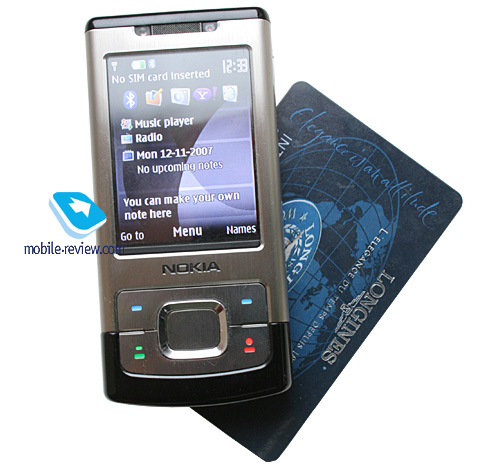
Gathering two fundamentally different models under one index is a questionable solution that might lead to confusion among consumers at first. In this wise Nokia is trying to get the audience to come to grips with the series names. When it comes to personal names (Sirocco, Luna), they are really all the rage, much more popular that the indexes, however as far as series names are concerned, it is a bit more complicated – the Classic suffix is already in titles of several models coming from different segments, in future their numbers will only grow, the same will happed to Slide, Sport, Navigator and others, still unknown to the broad audience.

In 2005 Nokia came up with two sliders – the 6270 and the 6280, which ended up sought-after on the market, and again it was all thanks to the power of the brand, in spite of a whole battery of issues with these handsets. While not skimping on features, they suffered from the slider mechanism, software bugs, also the market offered some strong competition in the form of Samsung-branded models, but all these things couldn’t hamper the progress of these devices. After quite a while they released a skin-deep update, the Nokia 6288, where they addressed the software flaws, slightly refreshed the design, nevertheless it was everything by the 6280 successor due to absolutely identical functionality, so this model was there only to prolong the lifecycle of a successful device.

With the Nokia 6500 Slide arrival, Nokia’s slider portfolio gets a real flagship, which combines all the latest changes to the software-hardware Series 40 platform, now it is the 5th edition, plus there is a pretty decent Carl Zeiss-powered camera, as well as pocketable dimensions, high build quality, smooth slider action, some metal in the casing and so on. It would seem with such list of amenities the model should skyrocket in the charts, and we can’t overlook its reasonably low price either, but in real life things go somewhat different way.
Design and materials
In order to get consumers familiar with the 6500 series, Nokia launched a special page, designed in contemporary style, where you see two doors of metal elevators, so in order to get to either the Slide or the Classic home page you should choose one of the doors. This idea is something really new and it looks interesting, as it underscores exactly the materials the models are made of – textured metal. Unlike the Classic, the 6500 Slide utilizes stainless steel rather than anodized aluminum, lending the device that solid and long-lasting feel. The battery compartment cover, the front face and even the buttons, saving for the number pad, are made of steel. Metal keys are quite rare guests on handsets, often it turns out to be a mere coating that is exposed to wear and tear, though here it doesn’t seem like suffering from this issue.

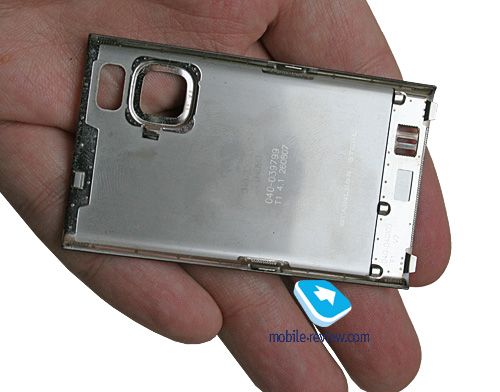
The Slide’s metal quality is pretty good, but do keep in mind that it is prone to scuffs – we found that out already 2-3 weeks into use, although there weren’t really eye-catching.
The steel used in the casing components is by no means thin, there are not just metal covers, but stamped details, everything is very reminiscent of the Nokia 6300’s materials. Glossy black plastic has been used only for a couple of parts, namely the underside, the number pad and the top end. These plastic parts keep low profile, though – the device looks like a solid metal bar, which does justice to it, you come to realize the handset’s aim for the enterprise audience, it is not a fashion-savvy solution like the 6500 Classic. This way, there is only one color scheme available – silver with black, which is a no-nonsense time-proven mix. Other trims won’t be rolled out for the 6500 slide.
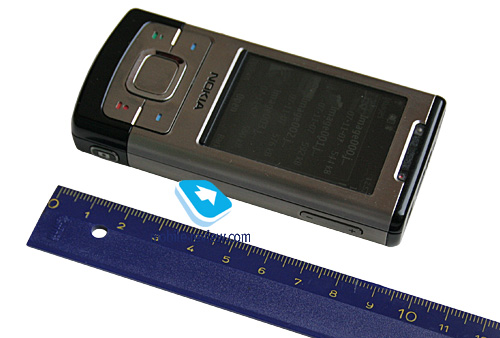
The device measures up at 96.5x46.5x16.4 mm and tips the scales at 125 g, which gives it quite petite, yet heavy feel. It also manages to stay palm-friendly with its not particularly thin profile, though you won’t struggle with it, that’s for sure.

On the rear is the 3,2 Mpix camera lens with auto-focus and Carl Zeiss optics. The values of aperture and focal length indicate that this module is different from the one found in the company last year’s imaging flagship, the Nokia N73, and puts up a marginally worse quality.
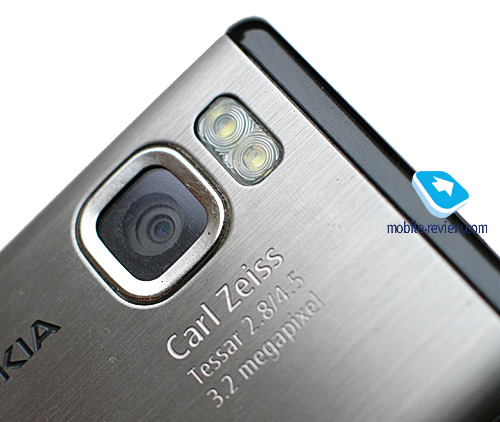
What is remarkable is that early prototypes of the device employed a different camera module, which matched that of the Nokia 7390. This way, there was no Carl Zeiss Optics label on the lens cover (all pictured feature this unit). The module got swapped, along with positioning, a tad later, so that now the Nokia 6500 Slide is positioned as a solution for imaging as well.
There is a sole loudspeaker, placed on the underside, which outputs acceptable sound, whose quality is in line with other Nokia’s offerings.
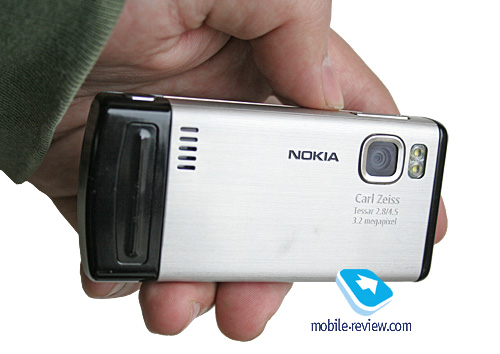

The top end is notable for carrying three sockets – standard 2,5 mm audio jack, slim charger slot and a new microUSB slot (more on which below). The tiny button standing next to it is the battery cover release latch.

Topping the display is an earpiece, flanked by the ambient light sensor and CIF-camera for videoconferencing.
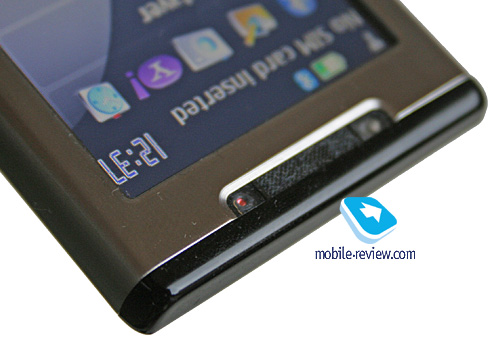
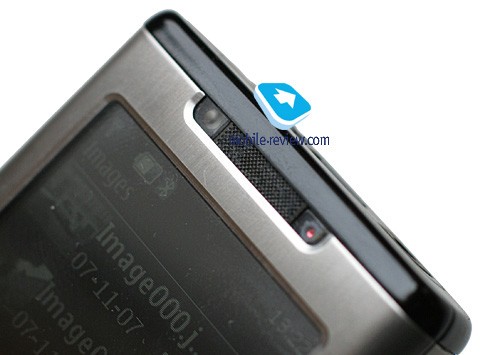
The slider mechanism is pretty decent, the halves slide back and forth effortlessly, a credit here also goes to the spring-loaded mechanism. Make no mistake about that – the 6500 Slide boasts of the best slider mechanisms among all Nokia has ever rolled out, we have absolutely no gripes with it. There are no gaps between the handset’s parts and nothing seems to be able to make some.
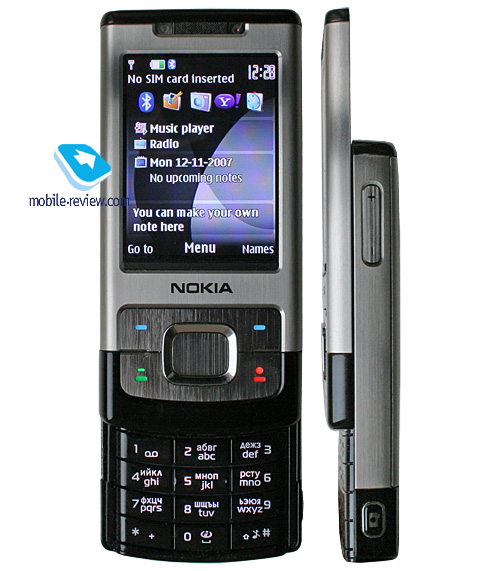
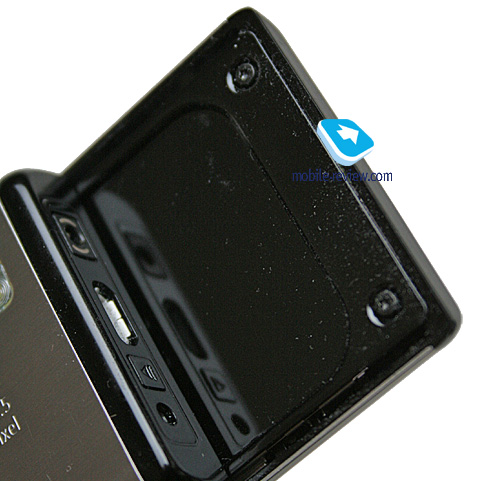
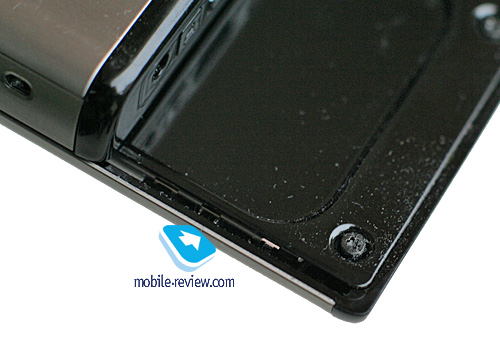
Back to the table of contents >>> Keypad
The phone’s keypad is made of glossy back plastic with pretty big buttons that resemble the Nokia N80 and the 6110 Navigator.
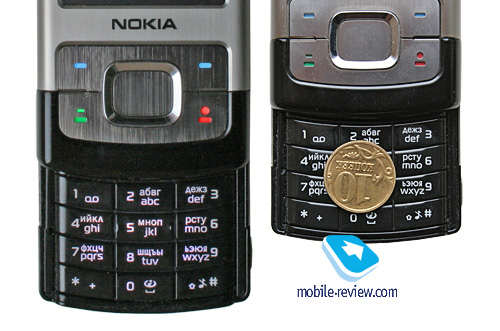
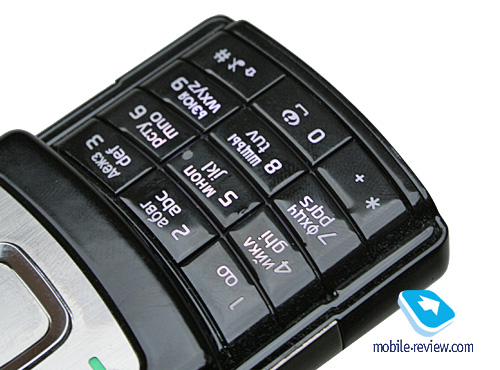
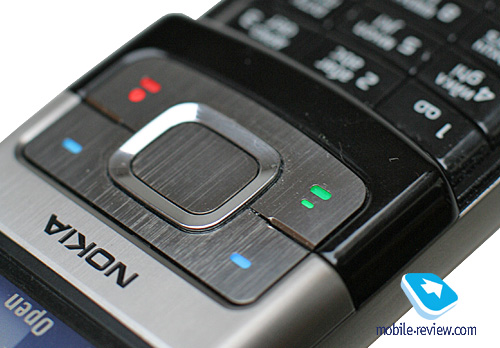
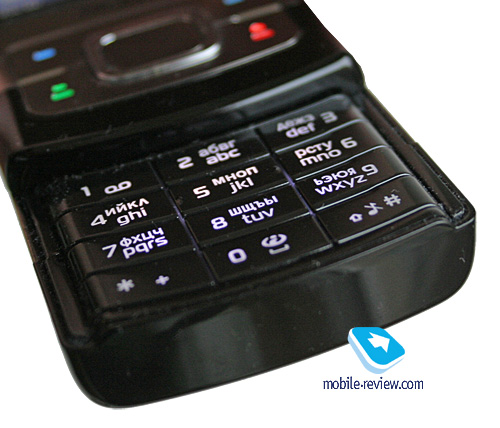
All keys are quite evenly lit in white, which is very well visible in the dark. The navigation keys are really bulky, and thus are easy to handle, you will never get a wrong press with them. Their backlighting is nothing to complain about.


Back to the table of contents >>> Display
The Nokia 6500 slide utilizes a QVGA display, powered by TFT technology (16 mln colors, which are all bright and vibrant) with a resolution of 240x320 pixels (diagonal of 2,2 inches, 36x48 mm). The manufacturer hasn’t included any type of backlighting adjustment, this makes allows the phone to same some power, but here is a kind of drawback to it: the model comes with the ambient light sensor that deals with the backlighting level of the display and the keypad automatically, and this way, the screen ends up looking darker and lackluster against the backdrop of offerings coming with no ambient light sensor onboard (6131, 6300). The same goes for the Nokia 7390, but basing on feedback, it isn’t much of a problem, in fact it isn’t even one. Nevertheless the user is enabled to choose standby screensaver and backlighting mode (on/off) – in the latter case, if the backlighting will be turned off, the information will remain visible indoors but only at certain angles. Apart from that you can completely switch off the screen, so that it will turn black with no information being displayed on it. In light of the screen having a mirror layer, it doesn’t fade in the sun and ensures that all data will be still readable.
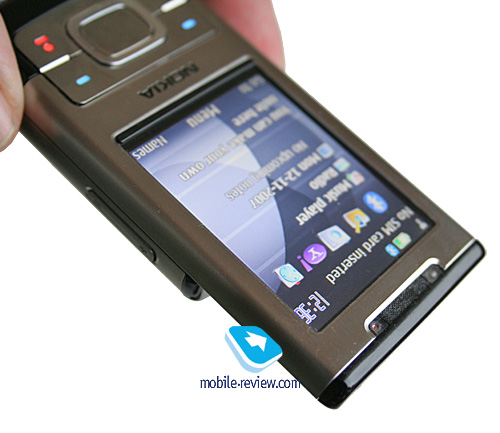
Here the display, unlike the Nokia 6500 Classic or the N95, sports ordinary protective glass (rather than a slim film), which rules out another “to-worry-about” thing. The black stripe beneath the screen is the thumb rest used for flicking the slider open.
Back to the table of contents >>> Memory
The user has access to about 20 Mb of storage, which is not much. Nevertheless with the announced support for microSD cards of up to 4 Gb, this shouldn’t be a major pain, especially knowing that these are already on sale. The hot-swappable memory expansion slot sits underneath the battery cover.
Back to the table of contents >>> Battery

The Nokia 6500 Slide utilizes the BP-5M cell, which is a standard 900 mAh Li-Ion unit that can keep the device up and running on average load (1,5 hours of calls, 6 hours of music and radio, up to 1 hour of other features) for about 2 days. No miracles here, these numbers are pretty much par for the course for this type.
Back to the table of contents >>> USB, Bluetooth
USB. Like the Nokia 6500 Classic and the 8600 Luna, the 6500 slide makes use of a microUSB slot placed on the top end. This socket kicks in when you connect data cable, headset or charger. At that, with data cable plugged in, you will have the battery charged, this ability is very coveted in the company’s phones.
The vendor says the handset supports USB 2.0, and it does indeed, in USB Mass Storage mode the connection via USB cable puts up medium data transfer speed which makes up about 500-600 Kb/s. This is slower than the Motorola RAZR2 V8, which also comes installed with microUSB-socket.
On connection you can pick USB Mass Storage, PC Studio or modem mode. Depending on your choice, the handset starts recharging the cell. It has no support for MTP, though, so you will have to upload all your tunes manually. The selection of folders, when music gets identified is limited to a couple of pre-installed directories, and it is unclear whether this is going to hold up in commercial units.
Bluetooth. The 6500 slide comes equipped with EDR-enabled version 2.0. The device sports the following profiles:
- Dial-Up Networking Profile
- Generic Access Profile
- Generic Object Exchange Profile
- Object Push Profile
- Serial Port Profile
- Handsfree Profile
- Headset Profile
- Synchronization Profile
- Basic Image Profile
- File Transfer Profile
- HID (host) Profile
- Stereo Advanced Audio Distribution Profile
- Advanced Audio/Video Remote Conference Profile
- A2DP
The Bluetooth implementation is, as always though, nothing to complain about, we encountered no issues with handling this type of connections, no differences here in relation to the 6300’s interface. The stereo-headset also works fine.
Back to the table of contents >>> Performance
The phone is a typical offering for its generation – no revelations here.
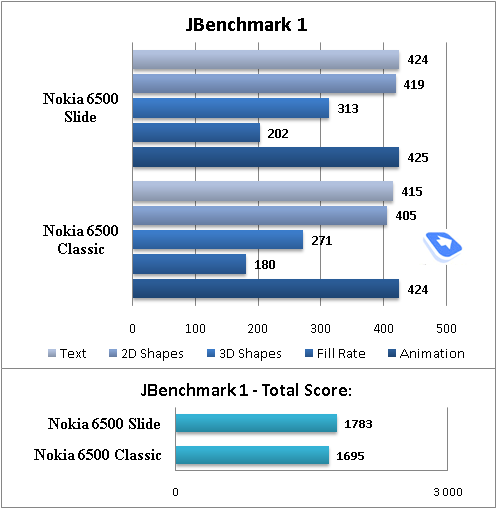
Back to the table of contents >>> Camera
Like we said in the first lines of this review, the camera module here is quite different from that found in the Nokia N73, the converse is false. It’s an open secret that the company builds all the latest and greatest technologies into its Nseries multimedia computers, in this case – camera modules. The Nokia 6500 Slide adopts a relatively cheap lens, and if we take quality as the criterion, then it would somewhere between the 7390 and the N73, meaning that the shots it snaps are more than adequate for an Series 40 powered mid-tier solution. Apparently, if you are after better imaging and video recording experience, you would be better off with Nseries devices on your shortlist, since within its range of feature phones Nokia isn’t going to employ the ultimately best solutions.
On the other hand, among feature phones, the 6500 Slide is an undisputable imaging flagship, which is emphasized in the press-release, as well as advertisements.
The following picture resolutions are supported:
- 1536õ2048;
- 1200õ1600;
- 960x1280;
- 480x640;
- 240x320;
- 120x160.
Three JPEG compression types are supported: basic, normal, high. Speaking of other options, there is shutter sound adjustment (on/off), x8 digital zoom, ability to choose between built-in memory and memory card for saving shots, white balance settings, ISO level, etc. Overlays may be applied to all taken snaps, so whether it’s worth using them before shooting or not – it is all up to you. The following effects are enabled: Greyscale, Sepia, Negative.
For those keen on multi-shot mode, there is an option in the 6500 slide that makes the camera take up to 3 shots in rapid succession, all settings remain identical to the single-shot mode, including resolution. There is also 10-second self-timer available.
The camera interface employs landscape layout, which looks really reminiscent of the Series 40v3 devices, so there is nothing this we can tell – everything is pretty comfortable, however the ergonomics is still a few steps behind Sony Ericsson’s multimedia smartphones.
The Slide’s camera quality is pretty good – on this front the phone stands very close to the previous season’s top solution from Nokia – the Nokia N73. What I want to stress here is that the Slide comes with no extra goodies for photos, meaning that you won’t be able to post your snaps in your blog or elsewhere right from the phone. These features are currently available only with the NSeries.
 |
 |
| (+) maximize, 2048x1536, JPEG |
(+) maximize, 2048x1536, JPEG |
 |
 |
| (+) maximize, 2048x1536, JPEG |
(+) maximize, 2048x1536, JPEG |
 |
 |
| (+) maximize, 2048x1536, JPEG |
(+) maximize, 2048x1536, JPEG |
 |
 |
| (+) maximize, 2048x1536, JPEG |
(+) maximize, 2048x1536, JPEG |
 |
 |
| (+) maximize, 2048x1536, JPEG |
(+) maximize, 2048x1536, JPEG |
 |
 |
| (+) maximize, 2048x1536, JPEG |
(+) maximize, 2048x1536, JPEG |
 |
 |
| (+) maximize, 2048x1536, JPEG |
(+) maximize, 2048x1536, JPEG |
 |
 |
| (+) maximize, 2048x1536, JPEG |
(+) maximize, 2048x1536, JPEG |
 |
 |
| (+) maximize, 2048x1536, JPEG |
(+) maximize, 2048x1536, JPEG |
 |
 |
| (+) maximize, 2048x1536, JPEG |
(+) maximize, 2048x1536, JPEG |
Video. The handset allows recording video in 3GP format, available resolutions – 128x96 pixels, or 176x144, 352x288, 640x480 pixels. Recording quality is divided into three parameters. You can limit recording’s length, but it also can be limitless, until memory runs out (of memory card or internal memory). Effects can be applied for video just as they can be applied for photos, they are one and the same. Video looks quite acceptable when you look at it on handset, including maximal resolution. However you will see artifacts when you view same video on PC, but it is still okay to watch, and that’s a great step forward. In case with 352x288 pixel video clips made by Nokia 6233 and same clips made by Samsung phones, Nokia’s ones look better, they have more natural color rendering. Considering fact that video recording is not a very demanded function by majority of users, here it is made without any concerns. Video recording-wise the model is similar to Nokia 6233, Nokia 6288.
Video sample (3gp, 4,62 mb) >>>
Back to the table of contents >>> TV-Out
The Carl Zeiss lens in a phone running Series 40 is not the only upgrade the 6500 Slide has up its sleeve. Apart from this, there is also a TV-out, which automatically means that you can view your handset’s contents on a big screen via the bundled cable. The way it is implemented here is no different from multimedia smartphones of the company, everything is very straightforward – the cable has standard RCA jacks on one side and plugs into the phone via the 2,5 mm socket on the other one. The handset supports the following standards: PAL, NTSC. In the settings menu you can adjust screen ratio – 16:9 or 4:3. On connection to a telly, the signal is identified automatically, and the picture pops up both on the big screen on the phone’s display. While in this mode you can browse the menus, view photos and watch videos, play games – do whatever you want. But it’s important to realize that this feature has been embedded for the purposes of viewing multimedia files in the first place, and playing game is a somewhat awkward experience due to low picture resolution and numerous artifacts on the TV screen, but viewing high-quality pictures turns out to be quite exciting. Video clips, recorded with the camera look pretty bad on a big screen, and it is not about resolution, frames per second is what really matters. The picture is not smooth and of course not crisp. In this regard, smartphones sporting 30 FPS VGA recording capabilities are still beyond competition, while in the 6500 Slide this functionality has been just tacked on, but it does bring some more fun into the standard suite of features. In future there will be more Series 40 models with this feature onboard coming; the 6500 Slide is only the first go.
Back to the table of contents >>>
Themes, applications, games
The handset comes equipped with a number of themes that do make the different to the way it looks, on top of that they go well with the phone’s image.
Also onboard are games like: Golf Tour, Highroller Casino, Rally 3D, Snake III, Sudoku, Soccer 3D.
The default suite of applications includes Converter, Nokia Sensor. Some markets may also see extra apps and games. Java applications of any size can be uploaded over the air or directly into the handset’s memory.
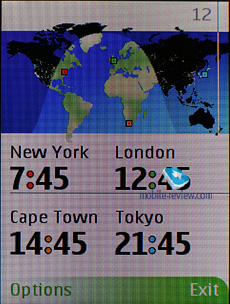
Back to the table of contents >>> Competition
It might sound strange, but the model doesn’t have any kind of direct competition on the Russian market in spite of its pretty basic functionality. If we are to count 3 Mpix sliders, then these would be Samsung’s latest offerings, the U600 and the U700. But the choice between these models and the 6500 Slide isn’t so obvious, as they differ in the sense of positioning and design – while the Samsung-branded devices are fashion phones with thinner profiles, more visual appeal, but the materials used are quite another story, no metal there.
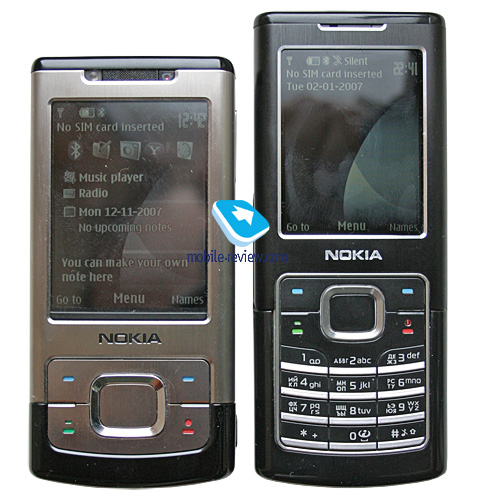
The Samsung U700 won’t be widely available in Russia due to its primary focus on 3G, so the U600 is left, which has already arrived. Their functionality is comparable for most consumers, so which way it goes will be decided by price, personal design preferences and brand for the most part, since all the centerpieces – camera, music player – are pretty much equal. However the European market works differently, as people there take into account 3G connectivity and fast data, so the Samsung U700 will fit the position of the 6500 slide rival better.
Unlike the Samsung G600, which is a more feature-packed solution with a 5 Mpix camera onboard, the Nokia 6500 Slide stands out of the drove with its materials and design. While bearing comparable price tags, they are totally different in terms of physical appearance. Consumers going for the G600 are very unlikely to consider the Nokia 6500 and vice versa.
Back to the table of contents >>> Impressions
The volume of the 72-chord call alert is quite high; the device is very audible in various environments, although, since there is only one polyphonic speaker on the place, that is located on the rear on top of that, you might end up missing a call should you have the 6500 slide in your jeans pocket. The handset does well on the reception front, being a typical representative of the current generation of devices. The silent alert is average strength-wise, but you will still feel it even with the phone in the pocket.
The Nokia 6500 Slide entered the market with a price tag of 370-400 Euro, and currently retails for around 440 Euro in Russia, which is not a really adequate – basically, you pay for the brand, the materials used and the ability to get pretty good images with the inbuilt camera. The Slide is by no means a flagship in imaging, being a mere fashion-savvy offering. On top of that, it doesn’t have any direct competition, which automatically unties Nokia’s hands. Early in 2008, its price is likely to drop down to 360-380 Euro, which will make a tad more interesting, but still won’t get it in line with European retail prices.
Nokia has rolled out a phone that is gratifying to use, feels sturdy, which, however, won’t be a best seller. But its target audience couldn’t be happier with this – the 6500 Slide looks snazzy, sports a known brand on the front plate, what more could we wish for?
The 6500 Slide's SAR value – 1.10 W/kg
Related links:
Back to the table of contents >>>
Eldar Murtazin (eldar@mobile-review.com)
Translated by Oleg Kononosov (oleg.kononosov@mobile-review.com)
Published — 04 December 2007
Have something to add?! Write us... eldar@mobile-review.com
|
News:
[ 31-07 16:21 ]Sir Jony Ive: Apple Isn't In It For The Money
[ 31-07 13:34 ]Video: Nokia Designer Interviews
[ 31-07 13:10 ]RIM To Layoff 3,000 More Employees
[ 30-07 20:59 ]Video: iPhone 5 Housing Shown Off
[ 30-07 19:12 ]Android Fortunes Decline In U.S.
[ 25-07 16:18 ]Why Apple Is Suing Samsung?
[ 25-07 15:53 ]A Few Choice Quotes About Apple ... By Samsung
[ 23-07 20:25 ]Russian iOS Hacker Calls It A Day
[ 23-07 17:40 ]Video: It's Still Not Out, But Galaxy Note 10.1 Gets An Ad
[ 19-07 19:10 ]Another Loss For Nokia: $1 Billion Down In Q2
[ 19-07 17:22 ]British Judge Orders Apple To Run Ads Saying Samsung Did Not Copy Them
[ 19-07 16:57 ]iPhone 5 To Feature Nano-SIM Cards
[ 18-07 14:20 ]What The iPad Could Have Looked Like ...
[ 18-07 13:25 ]App Store Hack Is Still Going Strong Despite Apple's Best Efforts
[ 13-07 12:34 ]Infographic: The (Hypothetical) Sale Of RIM
[ 13-07 11:10 ]Video: iPhone Hacker Makes In-App Purchases Free
[ 12-07 19:50 ]iPhone 5 Images Leak Again
[ 12-07 17:51 ]Android Takes 50%+ Of U.S. And Europe
[ 11-07 16:02 ]Apple Involved In 60% Of Patent Suits
[ 11-07 13:14 ]Video: Kindle Fire Gets A Jelly Bean
Subscribe
|
